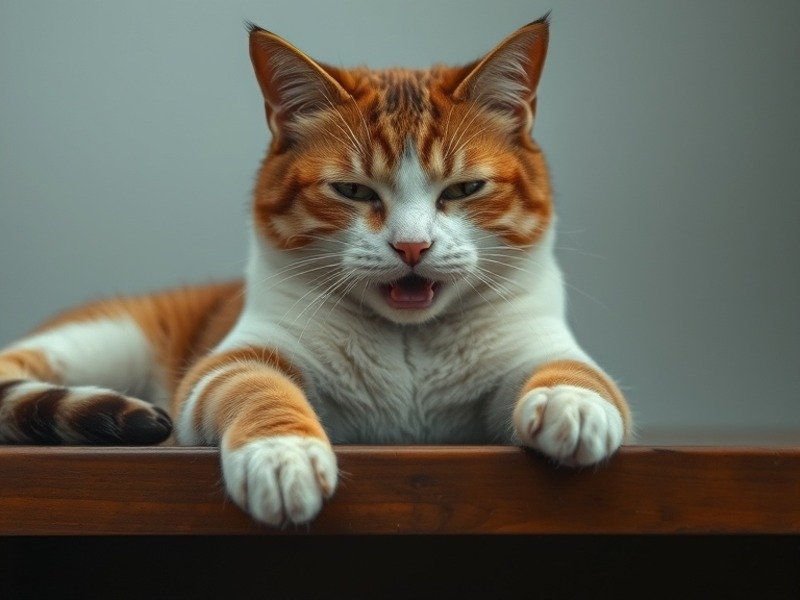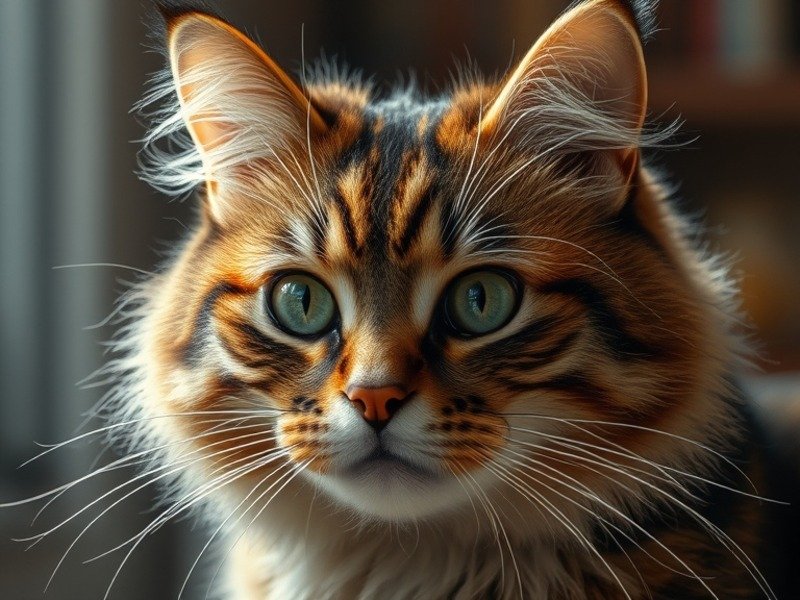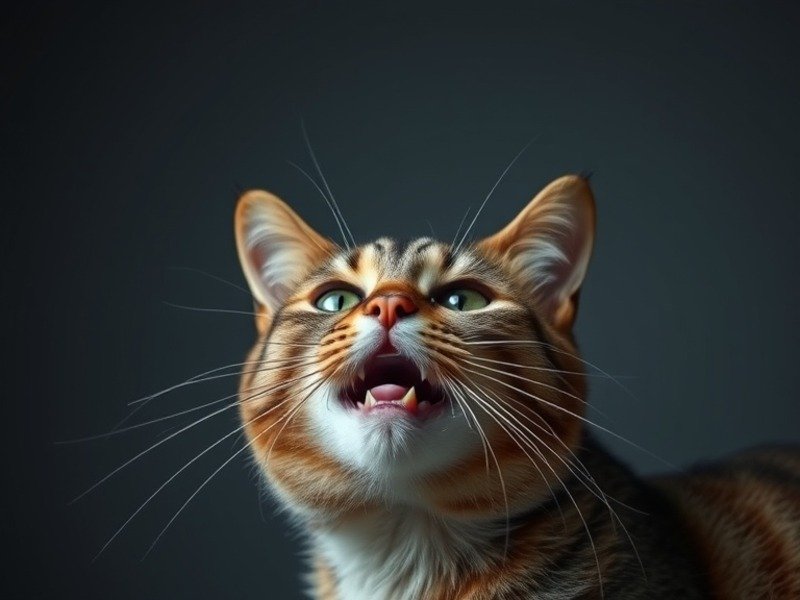Every cat owner knows their furry friend can be a little sensitive to their food choices. But what happens when your cat starts showing signs of discomfort, like vomiting white foam? You might find yourself worried, wondering what’s going on and how to help.
Why is White Foam Vomit a Concern?
White foamy vomit in cats can be a sign of a variety of conditions, ranging from simple indigestion to serious medical problems. It’s important to pay attention to what your cat is vomiting and look for any other concerning symptoms.
Understanding Vomit: What Does It Mean?
Vomit can provide clues about what’s going on inside your cat’s body. Here’s a quick guide:
- Hairballs: Hairballs are common in cats, especially long-haired breeds. They usually consist of a mixture of hair, saliva, and undigested food. Hairballs are typically brown or yellowish-brown in color.
- Food: If your cat vomits undigested food, it could be a sign of a number of things, including:
- Eating too quickly: Cats who eat too quickly can swallow air along with their food, leading to bloating and vomiting.
- Dietary indiscretion: Cats who eat something they shouldn’t, such as scraps of food, plants, or even non-food items, can vomit.
- Bile: Bile is a greenish-yellow fluid that helps to digest fats. If your cat vomits bile, it usually means their stomach is empty. This can be a sign of:
- Gastritis (inflammation of the stomach): Gastritis can cause an empty stomach and vomiting.
- Stress: Stress can cause an empty stomach and vomiting.
- Intestinal blockages: Intestinal blockages can prevent food from passing through the digestive system, leading to an empty stomach and vomiting.
- White Foam: White foam vomit usually indicates that the stomach is irritated or inflamed. It often contains a mixture of saliva, mucus, and undigested food.
Why is My Cat Throwing Up White Foam?
White foamy vomit in cats can be caused by a variety of factors, including:
- Gastritis (Inflammation of the Stomach): Gastritis is a common cause of white foam vomit. It can be caused by a variety of factors, including:
- Dietary Indiscretion: Eating something they shouldn’t, such as scraps of food, plants, or even non-food items.
- Stress: Stress can cause stomach ulcers.
- Infections: Bacteria or viruses can cause stomach inflammation.
- Medications: Certain medications can irritate the stomach lining.
- Dietary Changes: Sudden changes in diet can cause stomach upset and white foam vomit in some cats.
- Stress: Stress can also cause white foam vomit in cats. Stress can be triggered by a variety of factors, such as:
- Moving to a New Home: Relocating can be stressful for cats.
- Introducing a New Pet: Adding a new pet to the household can be stressful for existing cats.
- Veterinary Visits: Many cats feel anxious during veterinary visits.
- Loud Noises: Loud noises, such as fireworks or thunderstorms, can be stressful for cats.
- Food Allergies: Food allergies can trigger nausea and vomiting, sometimes producing white foam.
- Hairballs: While hairballs are usually brown or yellowish-brown, sometimes they can contain a mix of saliva and mucus that makes them appear white or foamy.
- Intestinal Blockages: Intestinal blockages can prevent food from passing through the digestive system, leading to an empty stomach and vomiting, which might appear foamy.
- Underlying Medical Conditions: White foam vomit can also be a sign of a number of underlying medical conditions, such as:
- Hyperthyroidism: An overactive thyroid gland can cause an increase in metabolism, leading to weight loss and vomiting.
- Kidney Disease: Kidney disease can cause a buildup of toxins in the body, leading to nausea and vomiting.
- Liver Disease: Liver disease can impair the liver’s ability to filter toxins, leading to nausea and vomiting.
- Cancer: Cancer can cause nausea and vomiting, particularly if it affects the digestive system.
A Case Study: Whiskers’ Foamy Mishap
Whiskers, a 5-year-old Maine Coon, woke his owner, David, early one morning with a loud, projectile vomit that looked like white foam. “He was a little shaky, and he seemed to be feeling unwell,” David says. “I wasn’t sure what was wrong.”
David took Whiskers to the vet, and the veterinarian suspected that Whiskers was suffering from gastritis. The vet recommended a bland diet and medication to help soothe Whiskers’ stomach. “Whiskers felt much better after a few days,” David says. “He was back to his normal self, happily eating and napping.”
Diagnosing White Foam Vomit in Cats
Diagnosing the cause of white foamy vomit in cats requires a thorough examination by a veterinarian. They will perform a physical exam, ask about your cat’s history, and often recommend some additional testing.
- Physical Examination: The veterinarian will assess your cat’s overall health, including their weight, body condition, and any signs of illness. They will check your cat’s temperature, pulse, and respiration, and they will examine their eyes, ears, nose, teeth, and gums. They will also feel your cat’s abdomen and lymph nodes for any abnormalities.
- Bloodwork: Blood tests can help rule out a variety of medical conditions, such as hyperthyroidism, kidney disease, liver disease, or cancer.
- Urinalysis: A urinalysis can help to assess kidney function, which can be affected by a number of medical conditions.
- Fecal Examination: A fecal examination can detect intestinal parasites.
- Radiographs (X-rays): X-rays can help to identify any abnormalities in the internal organs, which could indicate a medical condition.
- Ultrasound: Ultrasound can provide a more detailed view of the internal organs, helping to identify any abnormalities.
- Endoscopy: In some cases, your veterinarian might recommend an endoscopy, a procedure where a thin, flexible tube with a camera is inserted into the esophagus, stomach, or intestines to examine the lining for signs of inflammation or other problems.
Treating White Foam Vomit in Cats
Treatment for white foamy vomit in cats depends on the underlying cause.
- Dietary Changes: If white foam vomit is caused by a change in diet, your veterinarian can help you choose a food that’s appropriate for your cat’s age, breed, and activity level.
- Stress Reduction: Try to reduce stress in your cat’s environment by:
- Providing Safe Spaces: Offer your cat a quiet, comfortable space where they can feel secure.
- Using Pheromone Diffusers: Pheromone diffusers can help to create a calming environment.
- Playing with Your Cat: Playtime can help to relieve stress.
- Medications: If white foam vomit is caused by a medical condition, your veterinarian may prescribe medications to treat the underlying problem. For example:
- Anti-Nausea Medications: Medications to reduce nausea and vomiting.
- Antibiotics: Medications to treat bacterial infections.
- Antifungal Medications: Medications to treat fungal infections.
- Anti-Inflammatory Medications: Medications to reduce inflammation in the stomach or intestines.
- Antacids: Medications to reduce stomach acid.
- Medications to Treat Hyperthyroidism, Kidney Disease, or Liver Disease: Medications to manage the underlying medical condition.
- Dietary Management: If your cat has gastritis or other stomach problems, your veterinarian may recommend a bland diet for a few days. Bland diets typically consist of cooked chicken or turkey and white rice.
A Case Study: Whiskers’ Recovery
Whiskers, the Maine Coon with gastritis, responded well to treatment. He was prescribed medication to reduce stomach acid, and David followed the veterinarian’s instructions for providing him with a bland diet.
“Whiskers felt much better after a few days on the bland diet,” David says. “He was back to his normal self, happily eating and playing.”
Tips for Caring for Foamy Vomit in Cats
- Monitor Your Cat’s Behavior: Pay close attention to your cat’s behavior, especially if they’re vomiting or showing other signs of nausea. Look for signs of discomfort or distress, such as:
- Restlessness: Pacing or hiding more than usual.
- Lethargy: Sleeping more than usual.
- Changes in Appetite: Refusing to eat or having difficulty eating.
- Diarrhea: Loose stool.
- Provide Fresh Water: Make sure your cat has access to fresh water at all times.
- Offer Small, Frequent Meals: If your cat is vomiting, offer them small, frequent meals instead of one large meal.
- Consult a Veterinarian Immediately: If your cat is vomiting frequently, or if they’re vomiting blood or bile, or if they have a fever or other concerning symptoms, consult your veterinarian immediately. These could be signs of a serious medical condition that requires treatment.
Conclusion
White foamy vomit in cats can be a sign of a variety of conditions, but it’s important to remember that your cat is still your loving companion. By understanding the causes and seeking professional help, you can help your cat receive prompt veterinary care and increase their chances of a good outcome.








